parenting
My Ex Doesn't Want To Co-Parent
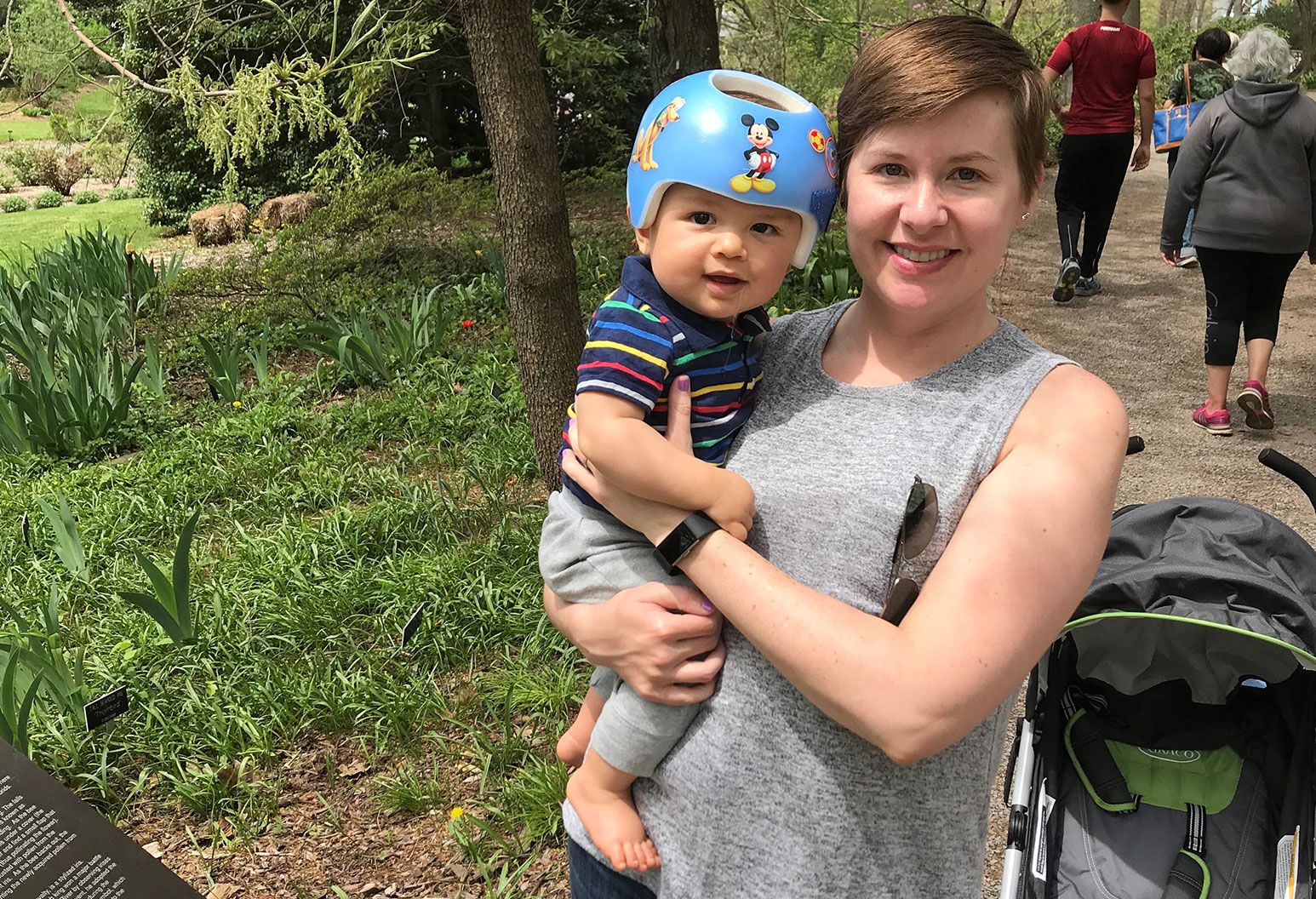
This is my son, Will.
Will is a happy 9-month-old whose hobbies include chewing on everything, babbling, and getting very excited when he sees a certain cartoon mouse on television. Up until a few months ago, he also had a flat head.
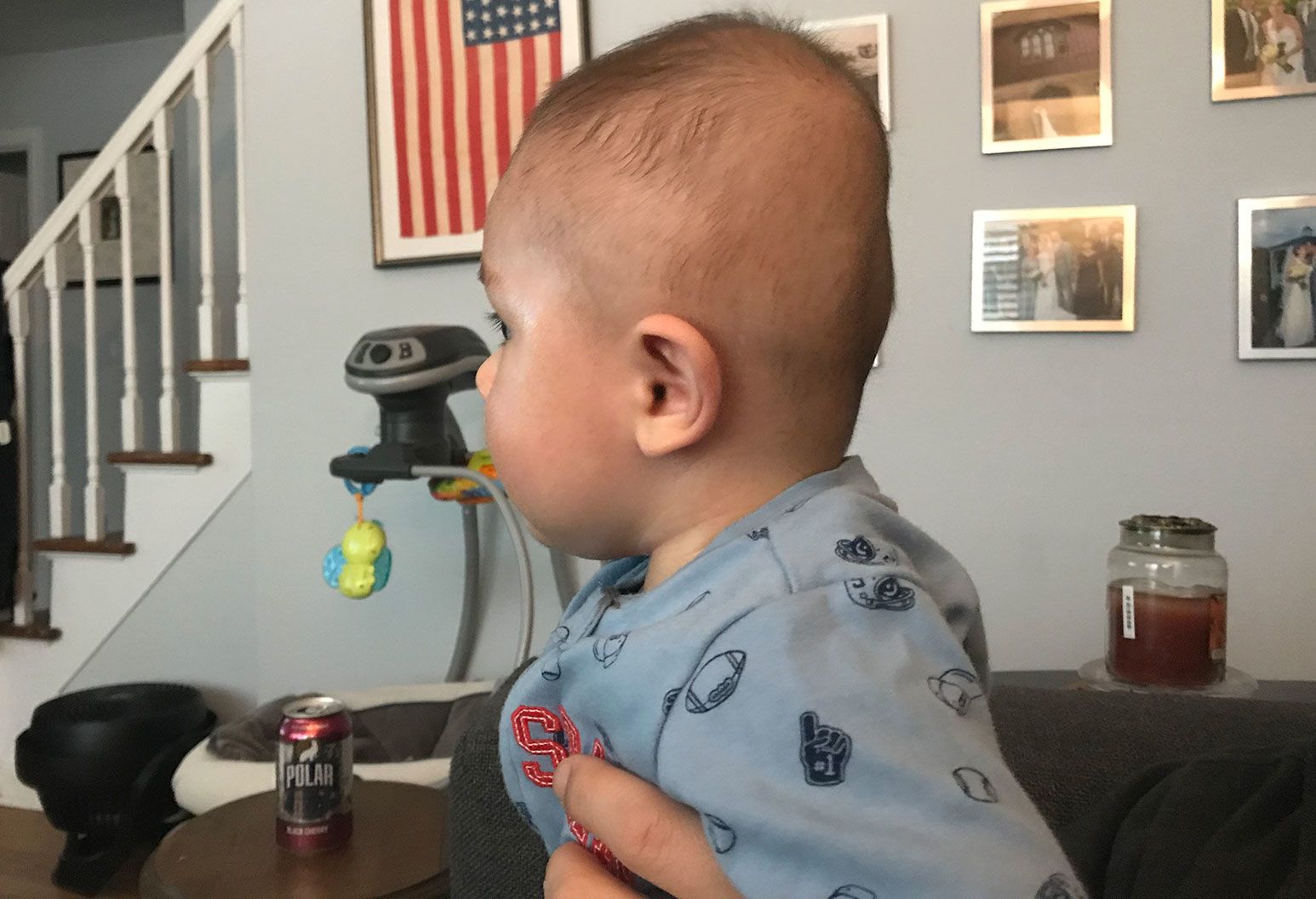
How did that happen? Well, sleep position recommendations are ever-changing. Nowadays, the experts advise placing babies on their backs at nap and bedtime as an important step in helping to prevent sudden infant death syndrome (SIDS), as well as accidental suffocating and strangulation. When Will was younger, he took the recommendations very seriously.
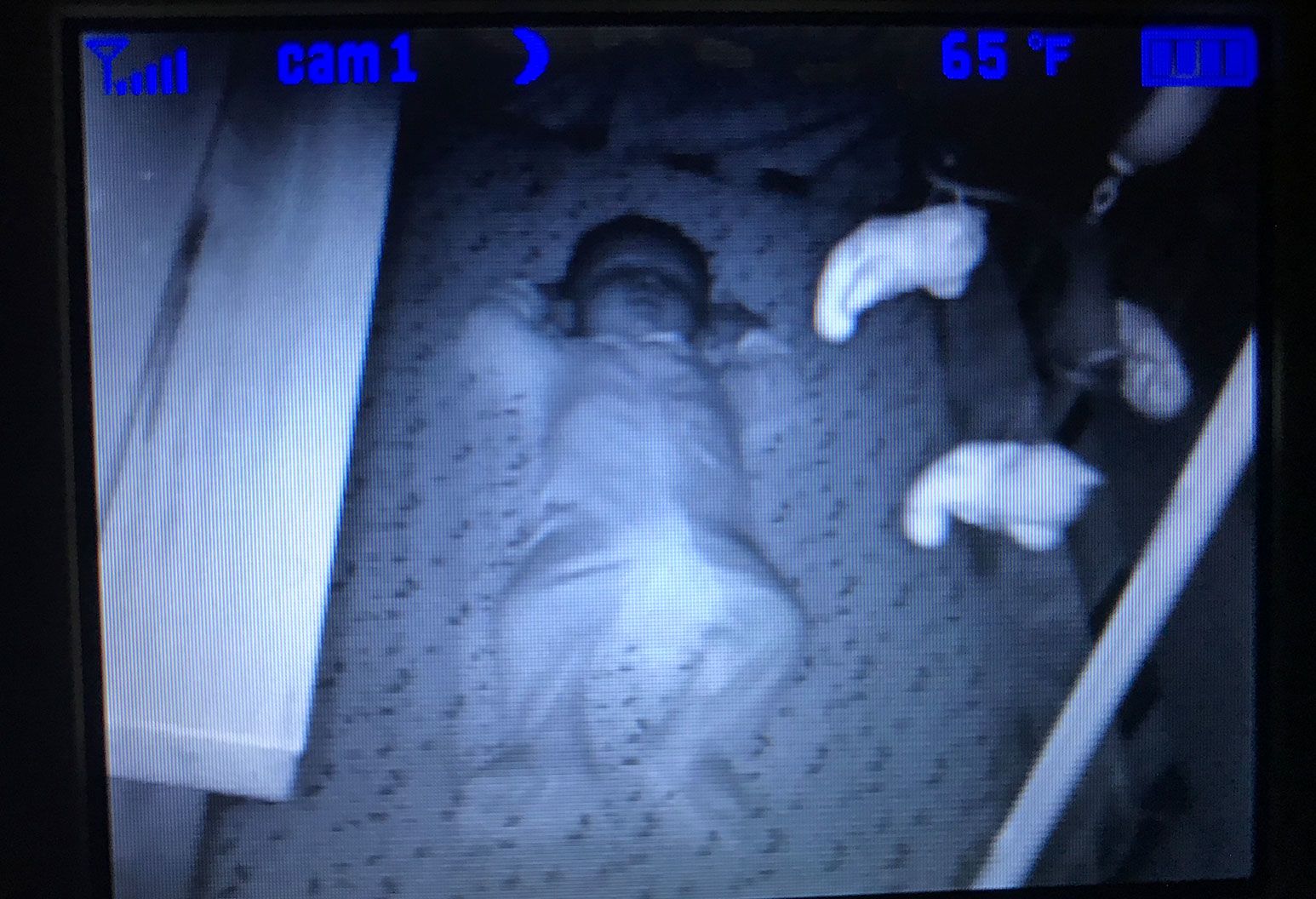
At around 4 months old, Will’s pediatrician recommended that we see a specialist because his head “looks a little flat.” Being a first-time mom, I thought his little smooshy head looked perfect. But I obeyed and made the appointment, thinking how proud I'd be when we walked out of there with a gleaming report.
But one (very short and shocking) visit later, a plastic surgeon declared that my son had deformational plagiocephaly (that’s medical speak for a flat head) and would need a helmet to round it out. Thankfully, because of his age, he would likely only have to wear it for a few months.
That’s all I remember from that visit because guilty mom thoughts began clouding my brain. I remembered those middle-of-the-night feedings when I didn’t rotate his head because I was just so happy that he went right back to sleep, those times I put him down for naps in his Rock and Play where he couldn't easily turn his head, and the times that should have been dedicated to “tummy time,” but I held him instead because, well, I wanted to! Less than 5 months old, I thought at the time, and I'd already failed him! We left the office with a pamphlet, a prescription for a helmet and a very cranky baby.
I learned that my son is far from alone. According to Dr. Mark Mittler, Northwell Health’s co-chief of the Division of Pediatric Neurosurgery at Cohen Children’s Medical Center, since the American Academy of Pediatrics (AAP) came up with its Back to Sleep program in the early 1990s, “We’ve created a nation of misshapen heads. But for good reason: to help avoid SIDS.” While it’s not possible to directly attribute the decrease in SIDS to this program, it’s likely that it has helped—according to an AAP study, SIDS cases have declined 50 percent since the program’s launch. “In the past, we believed it was better to put kids to bed on their stomachs,” continues Dr. Mittler. “We know better now. So we just deal with the cosmetic ramifications of a flat head if and when they arise.” Dr. Mittler sees about a dozen children a week with head shape issues.
A week later, we were off to a cranial remolding specialist who would fit Will for his helmet. The specialist explained that the helmet would allow his head room to expand in the back, even while resting against the bed or other hard, flat surfaces. Within a few days, he assured us, babies are typically used to wearing the helmet and it becomes a part of everyday life.
The measurement process was quick and easy—a sock-like hat with sensors was placed on his little head, and a device that looked like a retail scanner was used to circle his head and take measurements. It was completely painless, although Will enjoyed a nice freak-out during the appointment.

Despite Will’s meltdown, the staff was kind and efficient and within a few minutes his head had been measured and a blue helmet with Mickey Mouse Clubhouse decals had been selected.
Dr. Mittler stresses the importance of seeing a plastic surgeon or neurosurgeon who specializes in craniofacial deformities for diagnosis before going to an orthotist. “Only about 20 percent of the children I see actually need a helmet,” he says. “The rest can be treated with extra tummy time and specialized neck stretches.”
As promised, Will took to the helmet pretty quickly. We eased into it gradually, as was recommended, wearing it for four hours the first day, six the second, eight the third and then all the time. His first full night was interrupted by only three demands for a bottle instead of his usual two. My husband and I declared it a success.
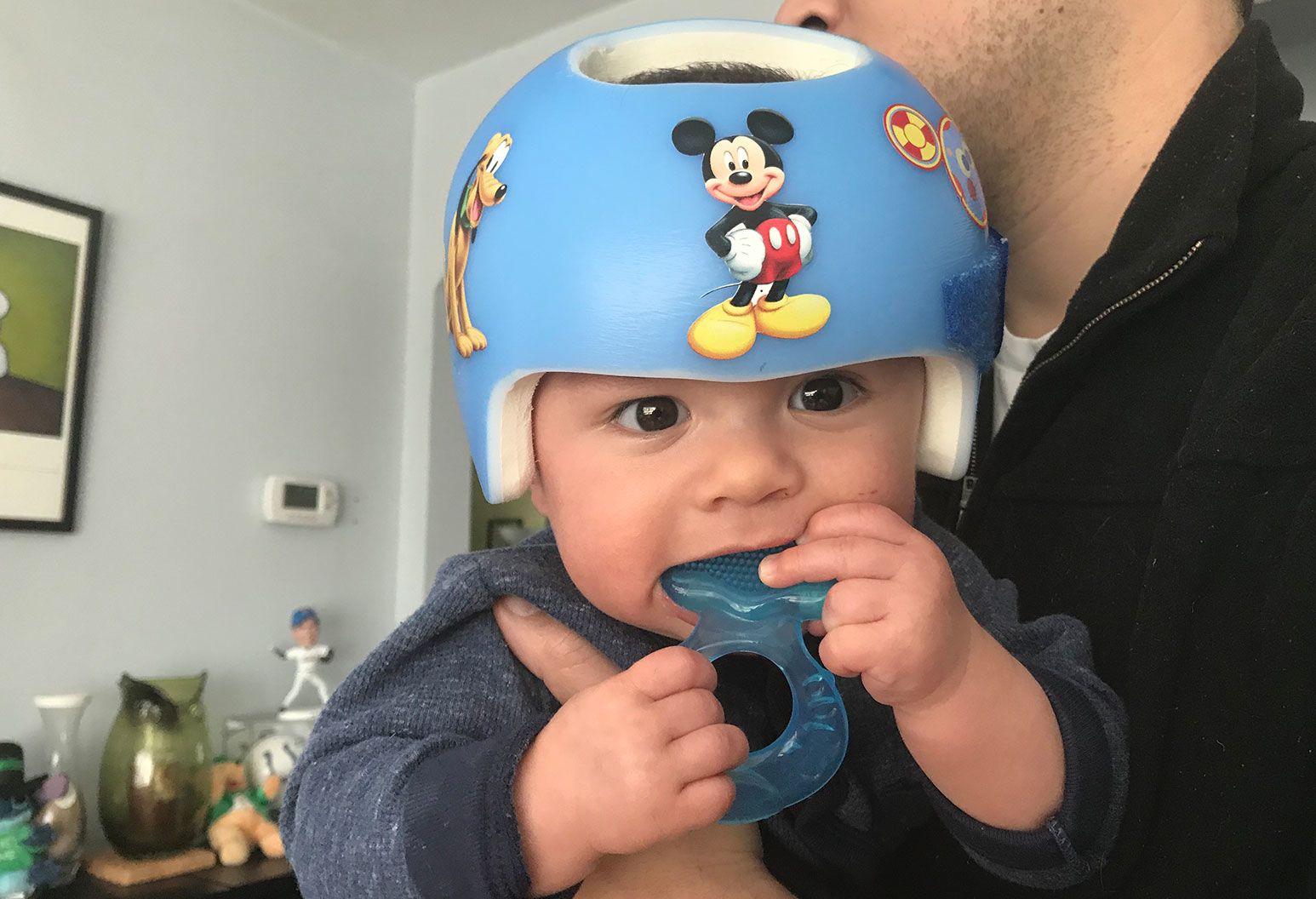
The next four months passed by pretty quickly. Milestones were achieved: First food, first tooth, sitting on his own, rolling all over the place, and almost crawling. He wore the helmet for 22 hours a day, with one-hour breaks each in the morning and evening for some air and a good cleaning—of his helmet and his sweaty little head.
We went to four checkup visits along the way. Each lasted about 15 minutes where we answered questions about how Will was doing and were told how much his head had grown. The baby freak-outs also diminished with each visit.
As the weather got warmer, we started taking our son more places—the mall, the playground, street fairs. Something that I hadn’t anticipated, but perhaps should have, was how many people would stare at a baby wearing a bright blue helmet. I’d catch people glancing at him, but trying not to make it obvious. There were a few times when I’d see them and outwardly say, “He’s fine—he just has a flat head and has to wear this for a few months.” It was a learning experience, as it made me self-conscious and I became more sensitive to other people’s issues. Luckily, Will was too young to notice. More often, I’d keep my mouth shut and become annoyed that people didn’t just ask about the helmet instead of looking at it. Funny enough, it was kids who asked why he was wearing a helmet, and I’d happily reply while he gave them a big gummy smile.
Before we knew it, Will was 9 months old, and we were on our way to our last appointment. His head had grown 2 centimeters in length. We could have continued to have Will wear the helmet for another three months for an additional centimeter of correction, but he had recently started pulling on it, and it was about to be July in New York—not an ideal time to be stuck in a giant plastic hat all day. So we opted to end treatment.
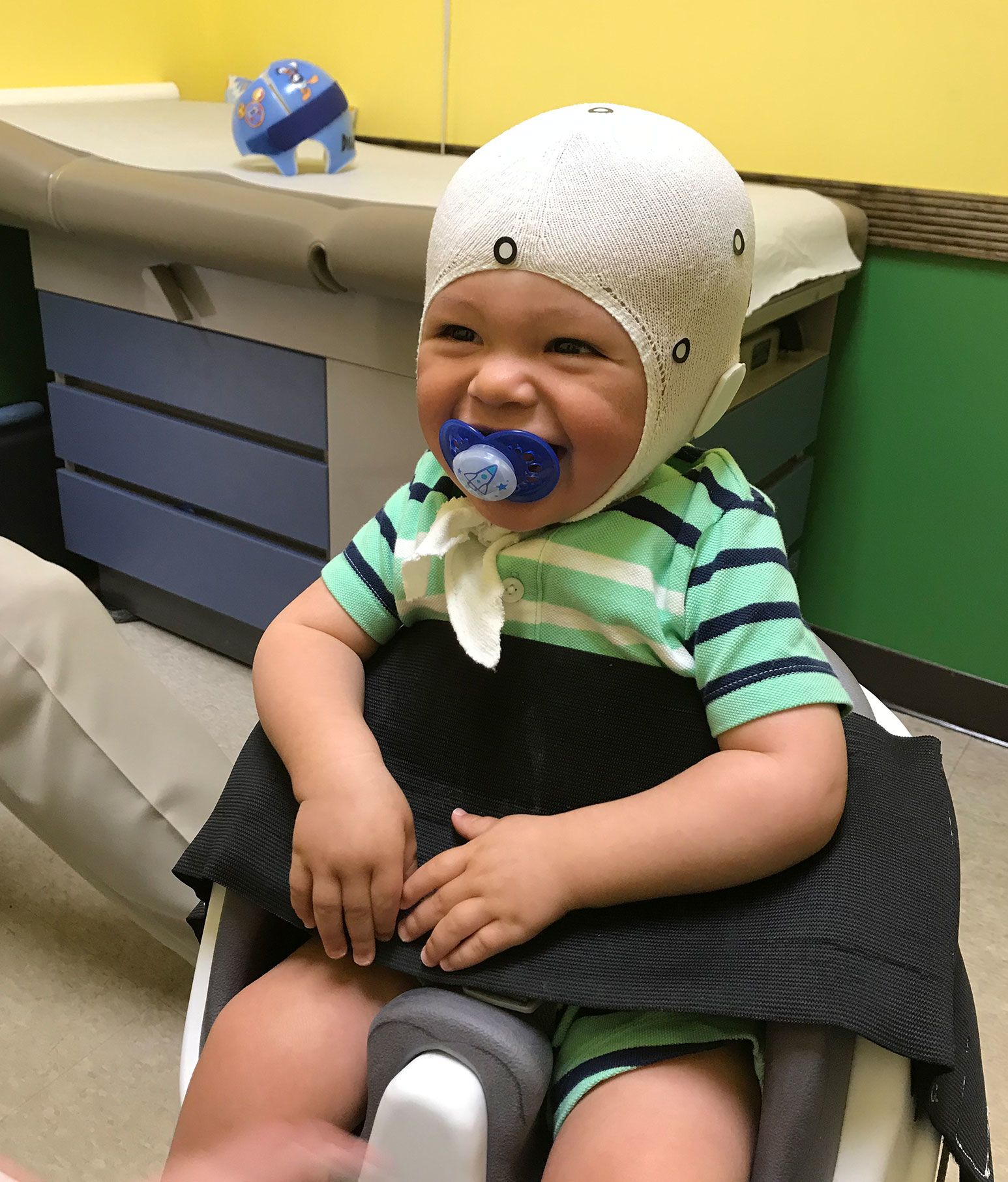
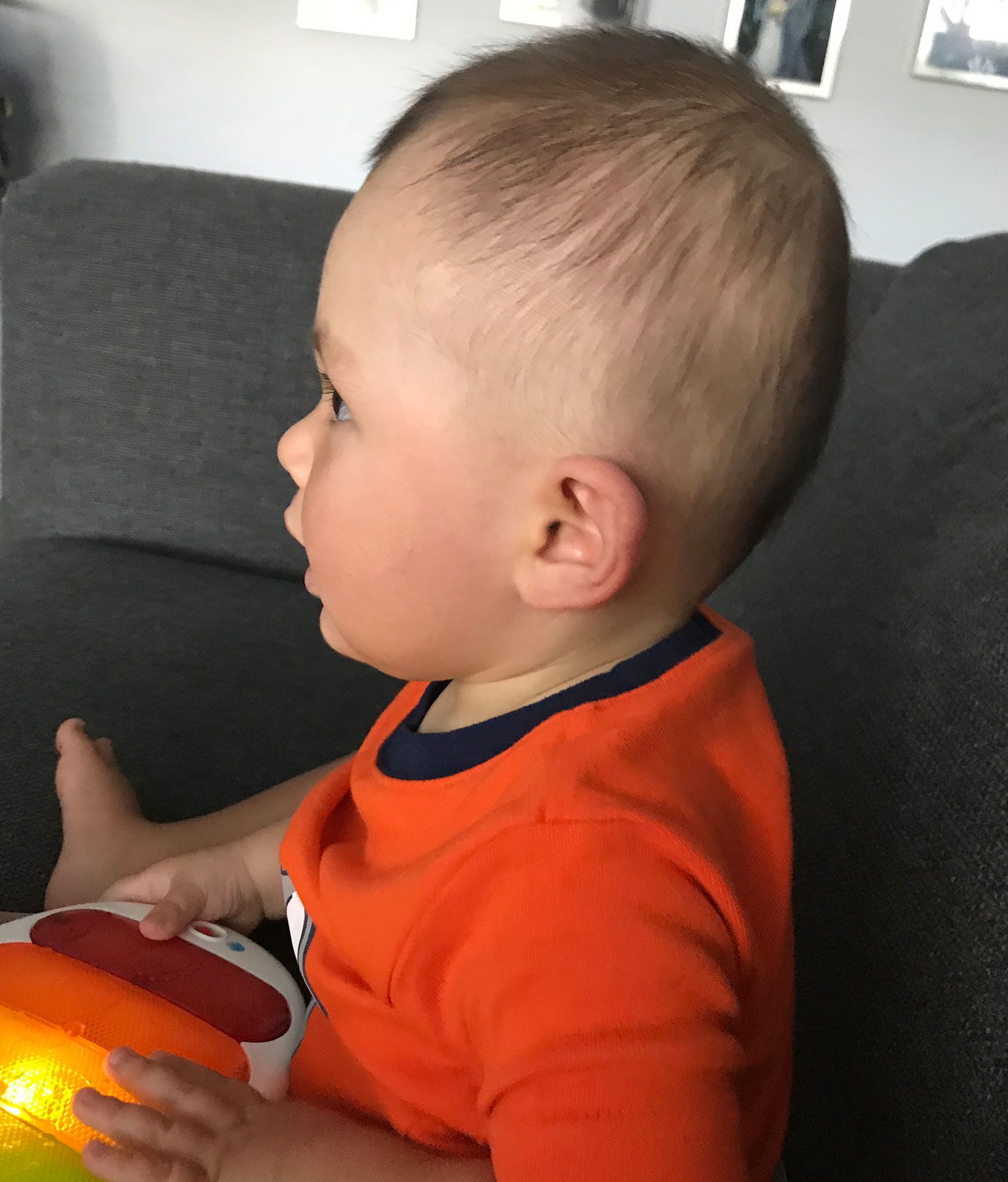
While I was apprehensive at first, I quickly realized what at first seemed like a mountain for Will to climb was actually just a blip in an otherwise lucky and healthy life. And, our family has gained a very unique souvenir from his babyhood!
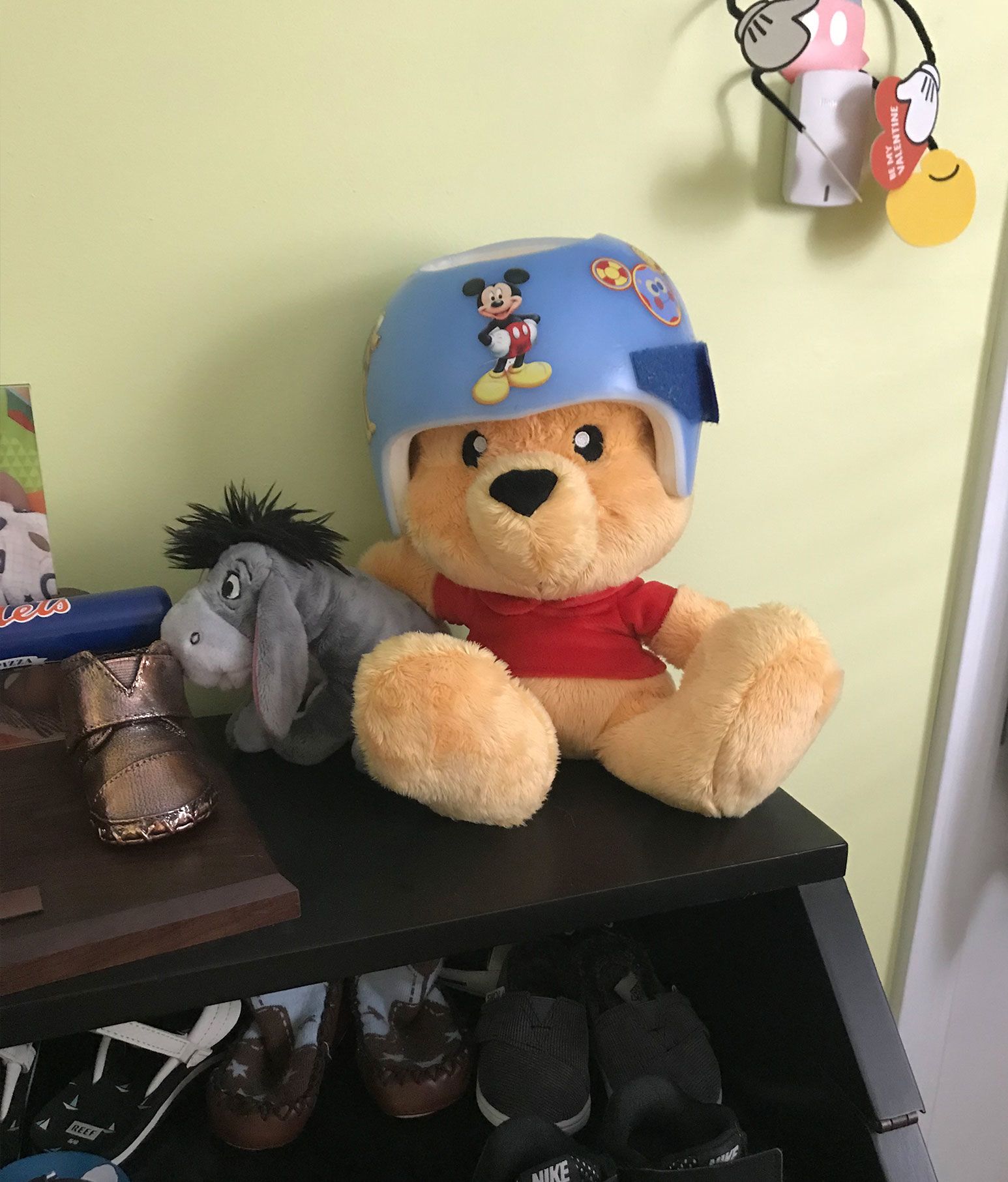
The Well is Northwell Health’s commitment to the future of health care. In this time of information overabundance, much of which is inaccurate, unhelpful, or even difficult to understand, Northwell Health is on a mission to make a difference as an honest, trusted, and caring partner. The site connects with consumers to provide them with personalized content that reduces their stress, makes them laugh, and ultimately feel more confident and capable on their healthcare journey.